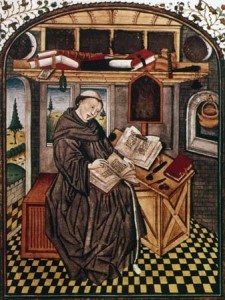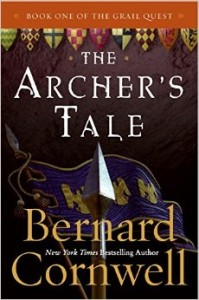Jen uses this insert to disprove Eric’s assumption that The Archer’s Tale was a fake book invented by Straka. The photocopy is from “The Burning Word” an article by D.W. MacCarrach and is on page 33 in “Toronto Review for History and the Humanities, Vol 1:1, 1954.” The text of the article does not pertain to the mystery of the Archer’s Tale, but the footnote does.
This footnote tells the story of an “unidentified young novice” who saves several books from a fire and brings them to a cathedral. Here, he expresses his grief that he failed to save a particularly special book, whose name is unclear. People referred to it as “The Book of S” or “Tales of the Archer”.
This story, of a benevolent stranger with no name, overlaps significantly with Ship of Theseus and S. The book is described as “an extensive compendium of fantastic, revelatory, subversive, comic, bawdy, and chilling tales… a forbidden secular text.” The novice clearly considered this book a reprieve from the highly structured world of the Church, in the same way that Jen and Eric use Ship of Theseus to escape the difficulties of the collegiate world. Like the novice, Jen and Eric share an attachment to literature that would compel them to save Ship of Theseus from a fire.

This story contains some historical inaccuracy; although no date is given, the author alludes to medieval times: monasteries stored books, and outlawed secular ones. However, an American whaler on The Imperia, witnessed the event.
The details and names in this insert mysteriously appear on page 21. MacCarrach mentions not only The Archer’s Tale, but also The Imperia. He notes that two witnesses, “not considered unreliable,” provide the third-person account of the story of the novice. One of the sources, he mentions, was captain of an “American Whaler, named The Imperia.”
Clearly Straka was familiar with the story told in the footnote. But how does one use this information to draw conclusions on Straka or his work? Did he simply borrow details from a story about the dedication to literature that he enjoyed and to which he could relate? Or is this part of a large “S” conspiracy — that originated with the novice who lost a copy of “The Book of S”? The details in this story give a glimpse into the complexity of S.
People and places in red do not exist in real life.

